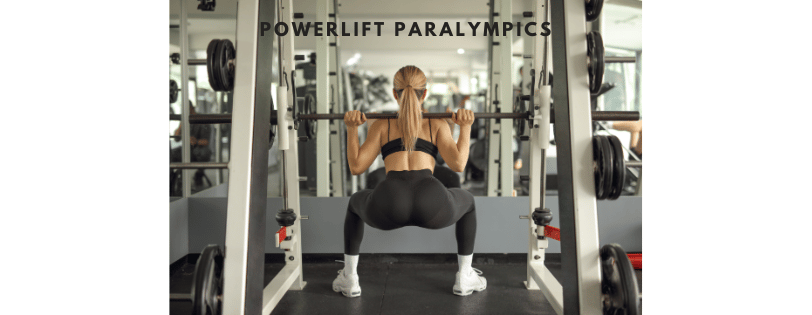How to Create an Inclusive Home Gym for Paralympic Powerlifting: Essential Equipment and Tips
Design an accessible home gym for Paralympic athletes with adaptive equipment. Discover essential gear for strength training, including adjustable benches, ergonomic weights, and cable systems. Learn how to create a safe, inclusive workout space for powerlifting at home.
SPORT


Powerlifting at the Paralympics: Building the Ultimate Inclusive Home Gym
Powerlifting for Paralympic athletes is trending worldwide, with impressive performances captivating fans during recent events. As athletes continue to break records and showcase their strength, many are inspired to take up the sport. This blog aims to guide Paralympic athletes and fitness enthusiasts in setting up a home gym that caters to their unique needs, ensuring inclusivity and functionality.
Whether you're training for competitive powerlifting or building upper-body strength for overall fitness, designing a gym with adaptive equipment is crucial. We’ll cover the essential gear for strength training and offer tips for creating an accessible workout environment. Additionally, for those looking to invest in quality equipment, we’ve included affiliate links to recommended products that are available online.
What’s Trending in Paralympic Powerlifting?
Powerlifting is not just about raw strength—it's about technique, dedication, and the right equipment. In recent Paralympic events, we've seen athletes from all over the world excel, pushing the boundaries of what’s possible. Whether it's Gino Petronelli smashing a world record in the -49 kg category or Maria Navarro's inspiring comeback, Paralympic powerlifting is evolving. As the sport grows, so does the need for specialized, inclusive training spaces.
With powerlifting gaining traction among people with disabilities, the demand for accessible home gyms is higher than ever. Athletes are realizing that training from the comfort of their homes allows them to fine-tune their skills without the barriers of public gyms.
Why Building an Inclusive Home Gym is Crucial
For Paralympic athletes, fitness is more than a hobby—it's a way of life. Training at home allows flexibility, focus, and freedom from public gym limitations. However, not every piece of equipment is suited for athletes with different mobility needs. A well-planned, inclusive gym ensures that you can perform every workout effectively, safely, and comfortably.
Designing a home gym with accessibility in mind also gives athletes the chance to fine-tune their routines without the constraints of a busy, often inaccessible public gym. The right gear can make all the difference when training for strength-based sports like powerlifting.
Essentials for an Inclusive Home Gym
1. Adjustable Weight Benches
A quality adjustable weight bench is vital for upper-body workouts, especially in powerlifting, where the bench press is a core component. When choosing a bench for your home gym, look for ones that are adjustable, sturdy, and designed for different body types and mobility levels. Check out , perfect for athletes needing extra support and versatility during their workout.
2. Ergonomic Free Weights
For powerlifting and general strength training, ergonomic free weights are ideal. These weights are designed to be easy to grip, making them accessible for people with limited hand function or dexterity. If you're ready to add weights to your home gym, explore some of the best adaptive weights available online . These weights come in various sizes and styles to suit your fitness level and goals.
3. Cable Pulley Systems
Cable pulley systems offer a wide range of exercises targeting multiple muscle groups. These systems are perfect for seated workouts, allowing Paralympic athletes to perform upper-body strength routines without needing to stand or move around excessively. We recommend this multi-functional cable pulley system , an ideal addition to any inclusive gym setup.
4. Hand Cycle Ergometer
Hand cycle ergometers are perfect for cardio and endurance workouts for those who rely primarily on upper-body strength. They simulate the motion of a bike, but with a focus on arms rather than legs, making them an ideal tool for athletes with lower-body limitations. For a smooth, adjustable workout, check out this hand cycle ergometer , which is perfect for small spaces and comes highly rated for durability and performance.
Tips for Setting Up Your Home Gym
1. Maximize Your Space
Accessibility is key when creating an inclusive gym. Keep enough space for wheelchairs and mobility devices, and ensure that equipment is easy to access. Consider multi-functional equipment to avoid clutter, like benches that can be adjusted for different exercises or compact cable systems.
2. Prioritize Safety
Always prioritize safety in your home gym. Install non-slip rubber flooring and make sure the equipment is stable and secured to avoid accidents. For added safety, consider equipment like power racks with safety bars or grab bars near weight machines. These safety aids are especially important in solo workouts.
3. Track Your Progress
Keeping track of your progress helps maintain motivation and fine-tune your workouts. Use fitness apps or wearable tech to monitor strength, endurance, and overall fitness goals. Also, install mirrors to check your form during weightlifting exercises—especially when practicing bench presses.
Affiliate Recommendations: Shop the Best Adaptive Gym Equipment
These recommended items have been chosen with inclusivity and performance in mind. By investing in quality, adaptive equipment, you’re not only setting yourself up for better results but also creating a safer, more accessible workout space tailored to your needs.
Final Thoughts: Powerlifting and Inclusivity Go Hand-in-Hand
As we see Paralympic powerlifting making headlines, it's clear that the sport continues to inspire athletes of all abilities. Setting up an inclusive home gym is not just about fitness—it’s about breaking down barriers and creating a space where every athlete can thrive. Whether you're aiming for the Paralympics or simply seeking a stronger, healthier body, the right equipment is essential for success.
By incorporating adjustable benches, adaptive weights, and ergonomic fitness gear, you can create a home gym that truly works for you. And with powerlifting continuing to gain momentum in the Paralympic community, now is the perfect time to invest in your strength journey.
Disclaimer: As an Amazon Affiliate, we may earn a commission if you purchase products through the links in this blog. However, this does not affect our product recommendations. We only promote items that meet our high standards for quality, accessibility, and value.
This blog is meant to provide practical advice for creating an accessible home gym, particularly for Paralympic athletes. By following these tips and investing in the right equipment, you'll have everything you need to achieve your fitness goals at home.


